sábado, 7 de julho de 2018
전기회로 (Electrical Circuits, ELE258)-Ho Gi Jung-Associate Professor, Department of Future Automobile Engineering, Hanyang University
LINK ORIGINAL
http://web.yonsei.ac.kr/hgjung/
LINK ELECTRICAL CIRCUITS
http://web.yonsei.ac.kr/hgjung/Lectures/ELE258/index.html
LINK LECTURE Three-phase AC circuit
http://web.yonsei.ac.kr/hgjung/Lectures/ELE258/11%203%EC%83%81%20%EA%B5%90%EB%A5%98%20%ED%9A%8C%EB%A1%9C.pdf
Textbook
Wang Mun-sung, "(Basic) Circuit Theory (2011 Edition)
sexta-feira, 6 de julho de 2018
Magnetic Design for High Temperature, High Frequency SiC Power Electronics Torbjørn Sørsdahl Norwegian University of Science and Technology Department of Electric Power Engineering
Magnetic Design for High Temperature, High Frequency SiC Power Electronics
Torbjørn Sørsdahl
Norwegian University of Science and Technology
Department of Electric Power Engineering
1 Summary
Power electronic components which can operate at high temperatures would benefit a large number of different applications such as in petroleum exploration, aviation and electrical vehicles. Silicon carbide semiconductors have in the recent years been introduced commercially in the market. They are opening up new possibilities to create high temperature devices, due to its superior properties over silicon. Design of high temperature magnetic components is still a tedious process compared to normal temperature levels due to little information and software to simplify this process. The purpose of this thesis is to develop analytical software for high frequency magnetic design in the temperature range from 130°C, and up to 200°C. Care has been taken into developing temperature dependent loss models and thermal design. The software is primarily for inductors, but most of the theory and discussion are also valid for transformers. Prototypes have been built and tested against the software predictions and good correlation has been observed. A brief introduction to magnetic materials that can be used at elevated temperatures have been included focusing on powder cores and ferrites, since other high frequency materials could not operate at 200°C. It was found that for most materials, it is the laminations and binder agents that introduce the temperature limit. Materials are designed for specific temperatures which make it likely that when there is a larger commercial interest for higher temperatures, new materials will be developed. Core characterization of ferrites and powder cores was performed with a Brochause steel tester up to 10 kHz, and the losses up to 100 kHz were measured using an oscilloscope and amplifier approach. The characterization was performed at 20°C 108°C and 180°C. The measurements show that the analytical loss data provided by the manufacturers underestimates the losses in Sendust and MPP materials, while there is a good correlation in High Flux, R-ferrite and N27. New Steinmetz parameters were calculated for MPP and Sendust for 20 kHz. Temperature primarily influences only Sendust up to 180 °C by a factor of 10-20 %, the little temperature dependence is in powder cores due to very high curie temperature. Winding configurations have been investigated, and Litz wire for 200°C do not seem to exist commercially at this date, however wire for 130°C was successfully used in several 180°C experiments, but permanent degradation was observed in wires which had been exposed for several hours. It was found that the insulation in enamel coated round conductors have problems at elevated temperatures under the rated temperature in the areas where the wire was bent, this was not observed in Litz wire. It has been shown that parallel connection of smaller powder cores can in some cases be used to obtain smaller designs with better thermal dissipation than with a single core. Leakage capacitance has been measured in several designs and by inserting an air gap between layers the capacitance was reduced in the same order as a Bank winding. Output filter for dv/dt, Sinus, and a step down converter have been calculated and built. The step down filter has been tested in a buck converter, and compared to analytical data.
LINK
https://pdfs.semanticscholar.org/cd3d/67fc303646f9e09b5d16c9d486a0790090f1.pdf
quinta-feira, 5 de julho de 2018
quarta-feira, 4 de julho de 2018
Development of High Power, High Frequency Magnetics for the Future Power Electronics Applications. Kapila Warnakulasuriya, Carroll & Meynell Transformers Ltd, UK,kapila@carroll-meynell.com Farhad Nabhani, Teesside University, United Kingdom
Development of High Power, High Frequency Magnetics for the Future Power Electronics Applications. Kapila Warnakulasuriya, Carroll & Meynell Transformers Ltd, UK,kapila@carroll-meynell.com Farhad Nabhani, Teesside University, United Kingdom, F.Nabhani@tees.ac.uk Vahid Askari, Teesside University, United Kingdom, v.askari@tees.ac.uk
Abstract
In this paper the optimum design of high power high frequency magnetics is discussed based on a 50kW application operating at 50 kHz. An in depth theoretical explanation on minimizing the losses at high frequency is discussed. A novel approach to the windings that makes the high frequency conductor losses due to proximity effect almost frequency independent is presented. Theoretical explanation of this phenomenon is given. Further how this approach will make it possible to develop a new generation of magnetics that enable power electronics designers to go for significantly high operating frequencies is discussed. The challenge of handling high temperature rise due to high power density of such high power high frequency magnetics is addressed in this paper with a practical solution for that. The theoretical findings are verified based on a set of prototypes developed for a 50kW DC DC converter operating at 50kHz. 1. Introduction Energy efficiency, low noise, reduced mass and dimensions are becoming more and more vital factors in designing magnetics for all kinds of modern power electronics applications such as rolling stock, renewable energy and similar applications. In order to achieve high degree of miniaturization, designers move into significantly high operating (switching) frequencies in the development of modern high power converters and inverters. There is also a clear trend that the operating frequencies used in these applications will continue to increase. Applications like traction, ship and basically any mobile platform with a converter on board require light weight and compact converters to exploit the space available on board more effectively. They often require galvanic isolation for safety or other reasons. Therefore high power high frequency transformers which offer galvanic isolation and a small volume are of increased importance [1]. In addition to the galvanic isolation magnetic components including transformers and inductors perform functions of harmonics filtering, energy storage, level shifting, current sensing and parameter matching for power stages as well as control circuitries in a power converter. They often determine the converter size [2], [3]. It has been a long held view that with a continuous increase in operating and /or switching frequency a continuous decrease in physical size of magnetics would follow. However the heat removal surface of the magnetic components decreases as a result of the higher density design; on the other hand, core and winding loss densities increase correspondingly. Therefore attention needs to be paid to magnetic material selection and associated core loss calculations, especially for high frequency high density magnetics and power converter design [2]. The selection of suitable core material out of several Ferrite grades and Nanocrystalline materials is discussed in this paper with modern approaches of estimating core losses in each type under non sinusoidal excitations of high frequencies such as 50kHz. The advantages of Nanocrystalline that the author has discussed in [11] for 20kHz applications reduce to some extent at this 50kHz application. The effects that high frequency currents such as 50kHz square and triangular waveforms have on conductor losses are explained. A novel winding technique that brings down the significance of proximity effect at high frequencies in transformer windings is presented in this paper. Several core material options such as Ferrite and Air cored inductor are discussed for the series inductor of converters operating in the range of 50kHz. Further a method of minimizing high frequency conductor losses of inductor windings carrying 50kHz currents of significant amplitudes is presented. A novel cooling technique for these compact magnetics with high power densities is discussed. A set of prototypes were developed based on the theoretical findings and tested on a DC/DC converter. Verification of theoretical findings based on practical observations is carried out.
LINK
https://zapdf.com/development-of-high-power-high-frequency-magnetics-for-the-f.html
Performance Comparison of Nanocrystalline Material with Ferrite in a 40kW 20kHz Application Kapila Warnakulasuriya, Carroll & Meynell Transformers Ltd, UK Farhad Nabhani, Teesside University, United Kingdom,
Performance Comparison of Nanocrystalline Material with
Ferrite in a 40kW 20kHz Application
Kapila Warnakulasuriya, Carroll & Meynell Transformers Ltd, UK,kapila@carroll-meynell.com
Farhad Nabhani, Teesside University, United Kingdom, F.Nabhani@tees.ac.uk
Vahid Askari, Teesside University, United Kingdom, v.askari@tees.ac.uk
Abstract
In this paper the performance of Nanocrystalline material in comparison with ferrite is evaluated for a high frequency high power transformer core application. The major advantage of Nanocrystalline material over ferrite is its ability to go for higher design flux densities. However, this is limited with increased losses occurring with the increase of operating frequency. The situation is studied for a 40kW, 20 kHz application. Samples of both versions are developed and a performance evaluation is made on the application. Based on the practical outcome a comparison is made in terms of power density per physical parameters such as weight and volume. The cost and manufacturability are also discussed.
1. Introduction
The transformers in electrical systems are responsible approximately to one third of total network losses. These losses are accounted as power quality costs, costs to society and to the environment itself [19]. With the development of power electronics techniques, pulsewidth modulated inverters (PWM) are widely used to control electrical machines, to feed transformers and to interface renewable energy systems. Also in the future DC electric power systems, high power DC –DC converters will play a major role as they will substitute today’s bulky 50/60 Hz transformers [17], [20]. The main purpose of high frequency operation of such power electronics circuits is to reduce the physical size and cost. The implication being that the losses and efficiency become of paramount importance because of the need to remove heat from the small surfaces [16]. High frequency transformers in such a power electronics circuits constitute a major proportion of the weight and losses. Thus, there is a rapid increase in the industry demand for the best optimization of high frequency transformers. The importance of looking into all the options of optimization become further more significant with the increase of amount of power handled. In this paper the design optimization of a 40kW High frequency transformer operating at 20kHz application is discussed. The losses in the core as well as in the windings are analyzed. Theoretical explanations on the principles used in optimizing the core and winding losses are discussed. Attention is given to make a comparison of the performance of nanocrystalline core and ferrite core. The design approach discussed below is used to arrive at optimal designs with each core material.
http://www.mediafire.com/file/69am6c2642rrvx4/TRANSFORMADOR%20FERRITE.pdf
segunda-feira, 2 de julho de 2018
Grid-tie inverter cooperating with renewable energy sources used for voltage quality improvement Ph.D. THESIS Łukasz Rosłaniec WARSAW UNIVERSITY OF TECHNOLOGY
Grid-tie inverter cooperating with renewable energy sources used for voltage quality improvement
Ph.D. THESIS Łukasz Rosłaniec
WARSAW UNIVERSITY OF TECHNOLOGY - Faculty of Electrical Engineering
Abstract
The dissertation centres on a single-phase voltage-source grid-tie inverter design and construction aimed at interconnecting various small-power renewable energy sources (RES) with an electric power system. It also provides the explanation of application areas for this kind of devices. A great part of the research addresses the problems arising from the influence of small-scale RES on the electric power quality in a low-voltage distribution grid the devices are mostly interconnected with. Therefore, the analysis of standard requirements regarding the interconnection of RES with the grid was included in the study. The thesis also characterizes the range of possibilities which voltage source inverters open up to help maintain power quality around the point of common coupling (PCC) during voltage disturbances caused by the receivers. An overview of a hardware design with an emphasis on output filter and control schemes for currently used single-phase inverters serves as a basis for describing the inventions introduced to the prototype. In the final section the simulation and experimental results of the designed inverter are presented and discussed..
FULL THESIS
https://repo.pw.edu.pl/docstore/download/WUT23082068df74474098925967751c9e84/Ros%C5%82aniec+%C5%81ukasz.pdf
domingo, 1 de julho de 2018
sábado, 30 de junho de 2018
Demirchyan K.S., Neiman L.R., Korovkin N.V., Chechurin V.L. Theoretical foundations of electrical engineering. VOL1-VOL-2-VOL3- Демирчян К.С., Нейман Л.Р, Коровкин Н.В, Чечурин В.Л. Теоретические основы электротехники
LINK ORIGINAL EN LA WEB
https://www.texenergo.ru/publication/biblioteka_elektrotekhnika/demirchyan_k_s_neyman_l_r_korovkin_n_v_chechurin_v_l_teoreticheskie_osnovy_elektrotekhniki/
TOMO1
https://www.texenergo.ru/upload/books/nejman_teo_osn_eltex_t1.pdf
TOMO2
https://www.texenergo.ru/upload/books/nejman_teo_osn_eltex_t2.pdf
TOMO3
https://www.texenergo.ru/upload/books/nejman_teo_osn_eltex_t3.pdf
quinta-feira, 28 de junho de 2018
ADVANCED INVERTER CONTROL FOR UNINTERRUPTIBLE POWER SUPPLIES AND GRID-CONNECTED RENEWABLE ENERGY APPLICATIONS By Shuai Jiang- Michigan State University-Electrical Engineering
ABSTRACT
ADVANCED INVERTER CONTROL FOR UNINTERRUPTIBLE POWER SUPPLIES AND GRID-CONNECTED RENEWABLE ENERGY APPLICATIONS
By Shuai Jiang
The advancement of digital signal processors (DSPs) and programmable logic devices in modern power electronics systems offer great control flexibility and capability, providing attractive features particularly for applications in which complex control tasks are involved. This dissertation investigates some DSP based advanced control algorithms for pulse-width modulation (PWM) inverter applications, in particular, voltage regulated inverters connected with AC loads and current regulated inverters connected with utility grids. Uninterruptible power supply (UPS) is a typical example of voltage regulated inverter applications. It is widely used to supply high quality, continuous and disturbance-free AC power to critical loads such as medical equipments, computers and communication systems. A good UPS system requires not only excellent steady state performances in terms of voltage regulation and total harmonic distortions (THD) regardless of unknown load disturbances but also a fast transient response during load step change. In this dissertation, a three-phase four-wire AC-DC-AC double conversion UPS system is first studied. Multi-loop control strategies are designed to regulate the system input currents, DC voltages, and output voltages. Next, study will deep dive into a DC-AC three-phase UPS inverter. A high performance repetitive controller (RC) for the voltage regulated three-phase inverter is proposed. The proposed control algorithm can eliminate all the periodic distortions and guarantees a high quality sinusoidal output voltage under unknown and severely distorted loads. A novel 4th-order linear phase infinite-impulse-response (IIR) filter is first used in the RC such that harmonic distortions up to the 19th order are rejected. In order to achieve fast response during step load transient while still maintaining the low THD feature, a modified synchronousframe approach with significantly reduced delay is later proposed and investigated. Grid-connected inverters utilizing renewable energy sources (e.g., photovoltaic, wind, fuel cell, etc.) are growing rapidly in recent years along with the constantly growing global demand for electricity. A grid-connected inverter injects a synchronously regulated sinusoidal current to the utility grid with required low THD and high power factor. Using an LCL filter in such a system has been recognized as a small size low cost solution due to its -60dB/dec high frequency attenuation. In this dissertation, a high-resonance-frequency LCL filter with minimal size and cost requirement is designed. A proportional plus repetitive control hybrid strategy is then proposed to achieve very low THD current regulation and high power factor. Although utility grid is often modeled as an infinite AC voltage source in inverter current control, it can introduce way more complicated resonance issues particularly when long transmission cables are used between the inverter and the main grid. A real example of an HVAC offshore wind farm system with long submarine cables is then investigated and emulated by a scaled-down 120Vac single-phase system. A systematic analysis is carried out and the key passive component parameters that cause high frequency resonances are identified. A notch filter based active damping control is proposed and implemented in the inverter. When a grid-connected inverter is sourced from photovoltaic (PV) panels, a front-end isolated DC-DC converter is usually incorporated and dedicated control must be employed based on the converter dynamics to achieve both maximum power point tracking (MPPT) and coordination with the 2nd-stage inverter control. A high performance system-level control scheme is designed for the proposed boost-half-bridge converter-inverter system in the PV application.
LINK THESIS
https://d.lib.msu.edu/etd/2193
quarta-feira, 27 de junho de 2018
INVERSOR CON TRANSISTORES DISTINTAS SOLUCIONES-TRANSISTOR STATIC INVERTERS VARIOUS SOLUTIONS-J. GUALDA,S. MARTINEZ GARCIA
REVISANDO MIS COPIAS HOY EN CASA ENCONTRE UNAS COPIAS DE LA REVISTA MUNDO ELECTRONICO 1979 - No 86 DE LOS AUTORES PROFESORES J. GUALDA ,SALVADOR MARTINEZ GARCIA,EN ESOS AÑOS ESTABA ESTUDIANDO INGENIERIA ELECTRONICA EN LA UNIVERSIDAD NACIONAL MAYOR DE SAN MARCOS -LIMA-PERU
LINK
http://www.mediafire.com/file/zaljldu59zlntjs/INVERSOR%20CON%20TRANSISTORES.pdf
LINK
http://www.mediafire.com/file/zaljldu59zlntjs/INVERSOR%20CON%20TRANSISTORES.pdf
Assinar:
Postagens (Atom)










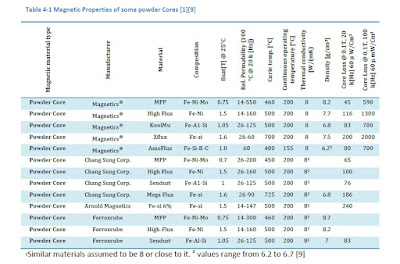


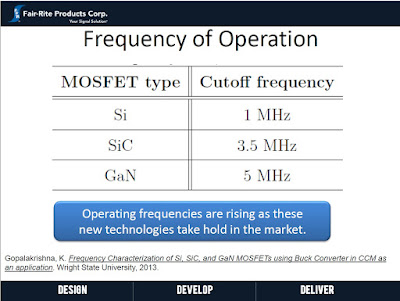
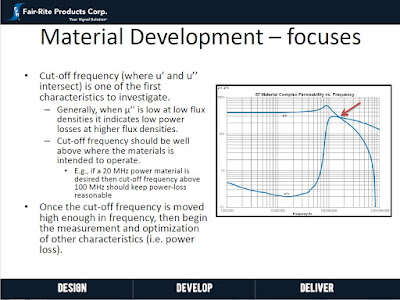




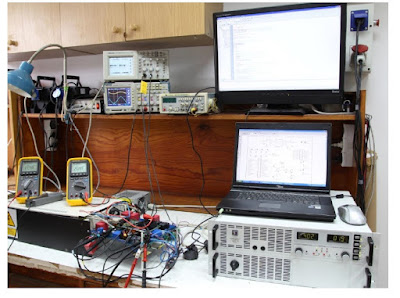
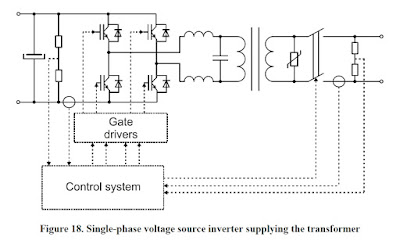
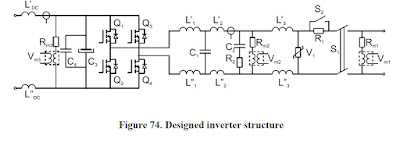

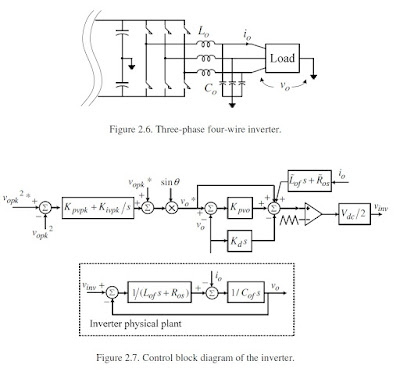


























 JOSIL ARTISTA PLASTICO FORTALEZA CEARA BRASIL AV.HERACLITO GRAÇA 41 TEL(85)32542378
JOSIL ARTISTA PLASTICO FORTALEZA CEARA BRASIL AV.HERACLITO GRAÇA 41 TEL(85)32542378















